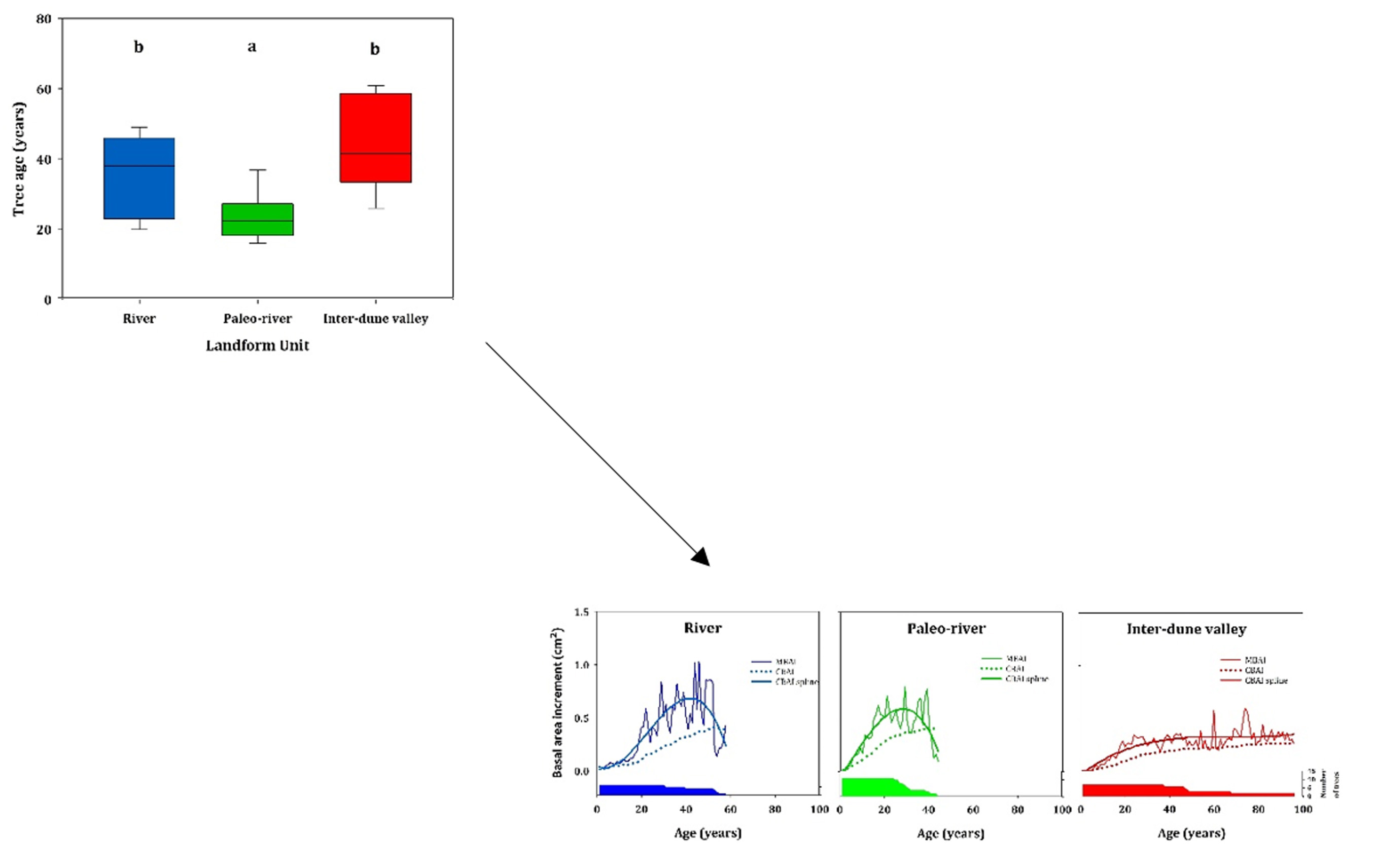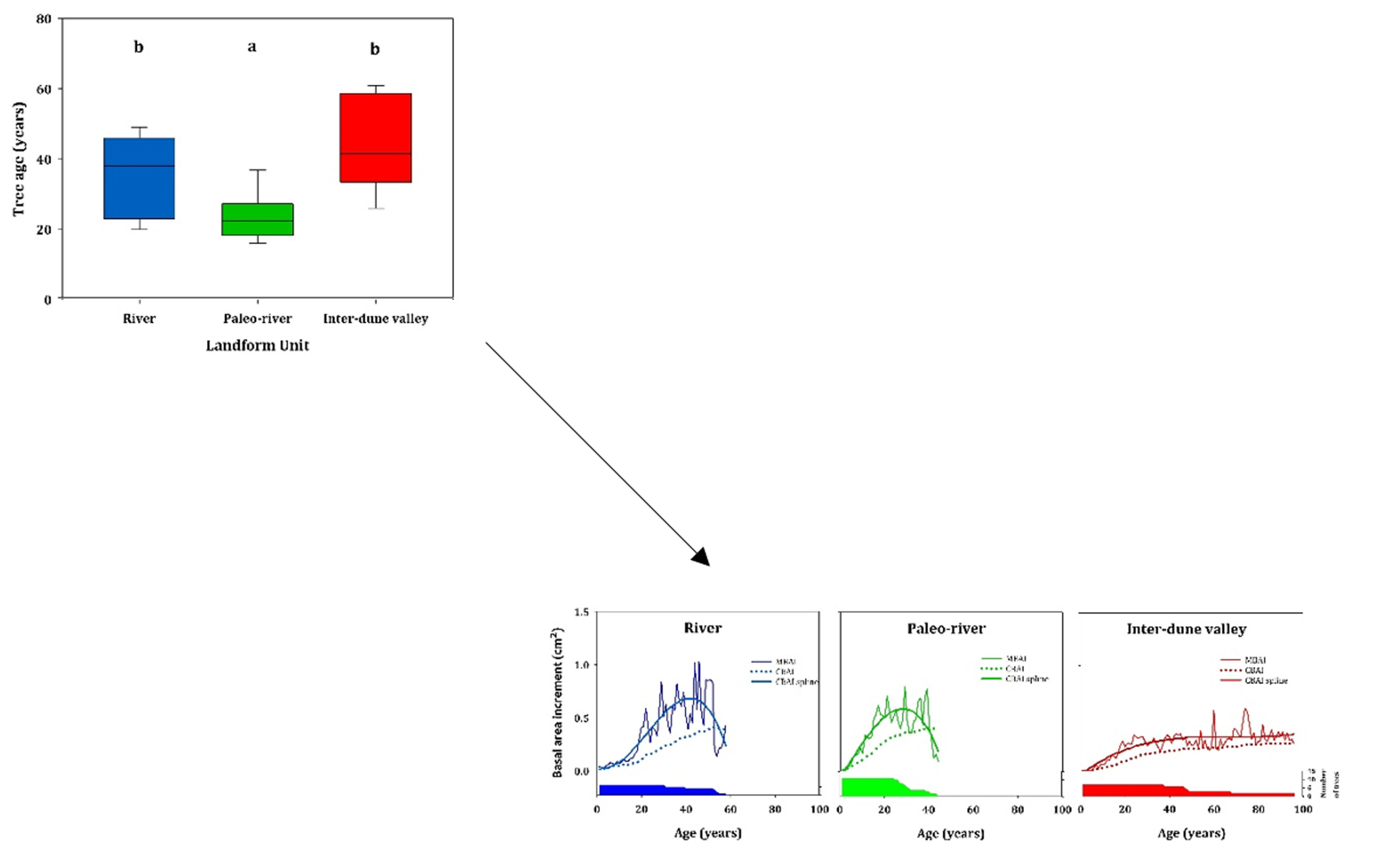Landform heterogeneity drives multi-stemmed Neltuma flexuosa growth dynamics. Implication for the Central Monte Desert forest management
DOI:
https://doi.org/10.48162/rev.39.120Keywords:
arid woodlands, forest management, growth form, tree-ringsAbstract

Drylands represent the main earth biome, providing ecosytemic services to a large number of people. Along these environments, woodlands are often dominated by multi-stemmed trees, which are exploited by local inhabitants to obtain forest products for their livelihood. In central-west Argentina, Neltuma flexuosa (algarrobo) woodlands are distributed across different landform units, varying in topographical and soil characteristics. This research aimed to reconstruct stem-growth time until harvestable diameter was achieved, and biological rotation age according to topo-edaphic variability in three algarrobo forests using dendrochronological methods. Results indicated that landform heterogeneity modulated species radial growth, influencing stem increments and cutting cycle period. In this sense, a decreasing trend in tree productivity emerged along a loamy-to-sandy textured soil gradient. These findings provide useful novel information for N. flexuosa forest management, suggesting the need to account for spatial landform/soil heterogeneity when examining desert forest dynamics.
Highlights:
- Neltuma flexuosa provides forest product (poles) to Central Monte Desert (Argentina) local inhabitants.
- N. flexuosa wood productivity was assessed for different topo-edaphic landforms.
- Cutting cycle was reached at younger ages at river and paleo-river landforms.
- Wood extraction must consider landscape heterogeneity.

Downloads
Published
Issue
Section
License
Copyright (c) 2018 Revista de la Facultad de Ciencias Agrarias UNCuyo

This work is licensed under a Creative Commons Attribution-NonCommercial-ShareAlike 3.0 Unported License.
Aquellos autores/as que tengan publicaciones con esta revista, aceptan las Políticas Editoriales.


